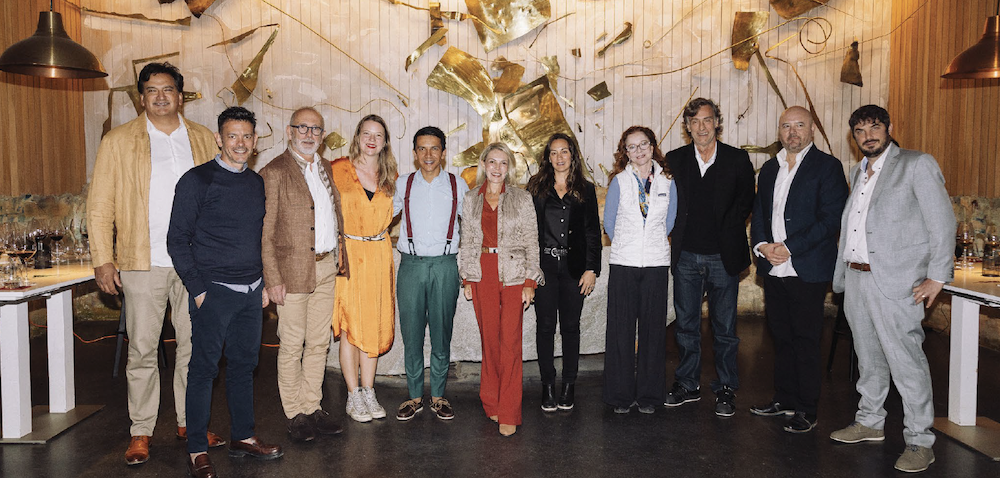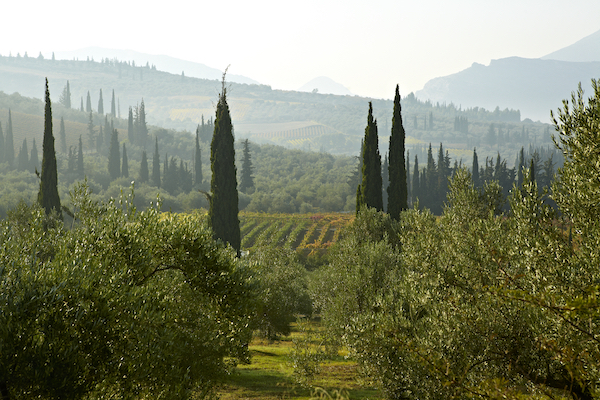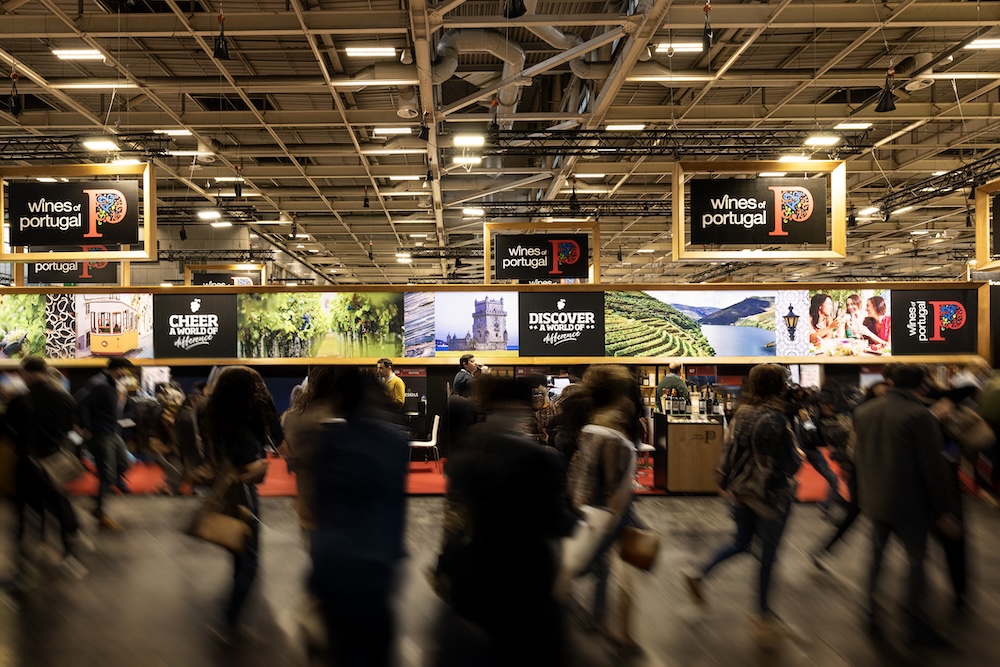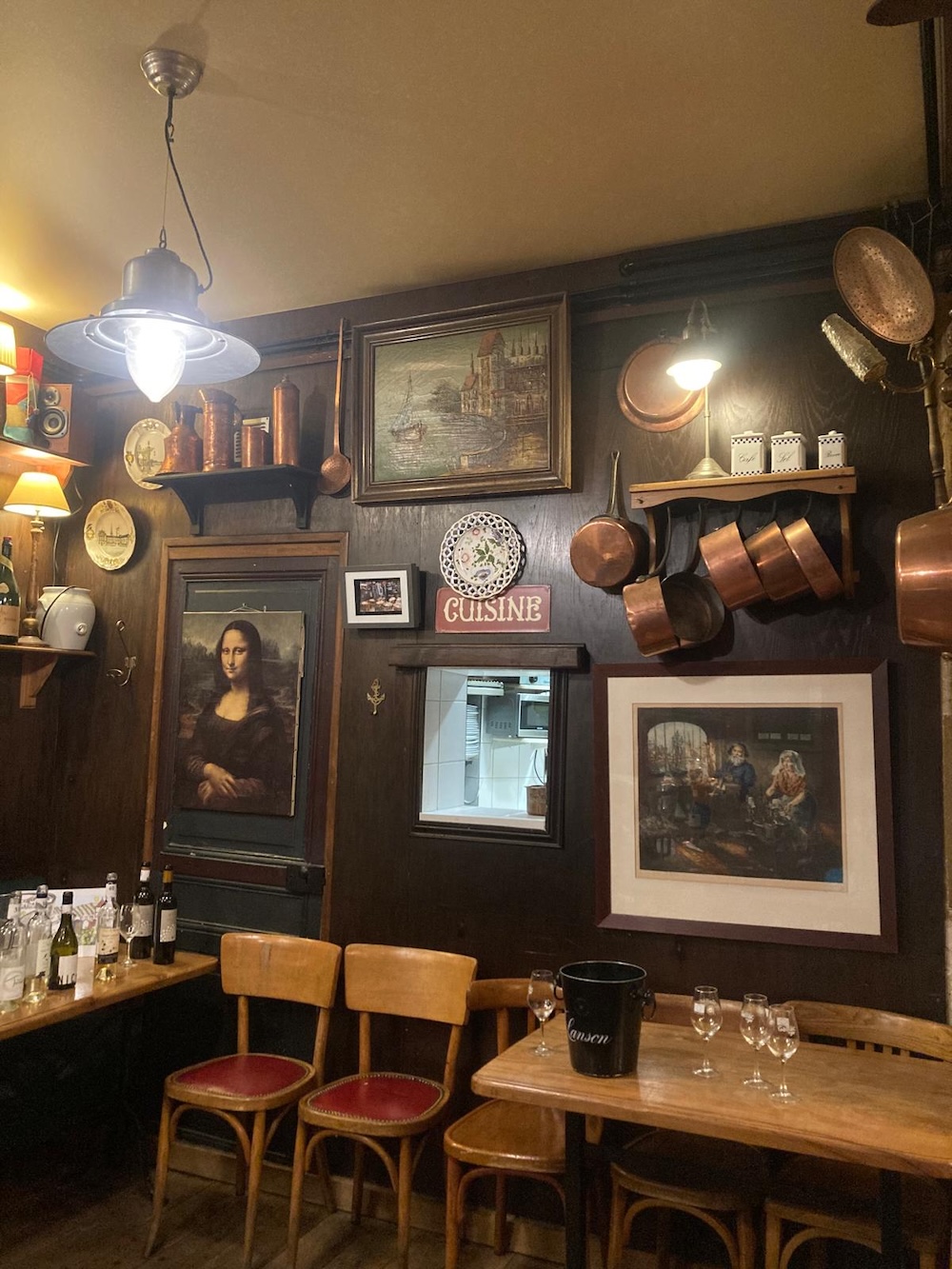
Discovery

Discovery
By Maria Netsika - Photos: Courtesy of the estates, author archive, posted on 25 August 2022
Greece has, arguably, one of the longest wine histories in the world. Wine has been an integral part of Greek culture since Antiquity. In the last four decades, a wind of change has been blowing through the Greek wine world. Today, Greece produces wine for wine connoisseurs, traditional wine enthusiasts, New World aficionados… pretty much for everyone. It is worthwhile getting to know the wines, and enjoying them this summer.

The 1970s and ‘80s were a time of tremendous experimentation for Greek wine. It was an era of idealism and vision coupled with a lucky confluence of events. A young generation of oenologists, together with a handful of visionary older winemakers, would eventually change the face of Greek wines. The new generation, most of whom had studied in Bordeaux, combined knowledge of modern winemaking technology, familiarity with international varietals and a new-found, passionate interest in one of the most fascinating aspects of their native land: the more than 300 vitis vinifera grape varieties that are indigenous to Greece.
In this way, besides the regions that have been producing wine since the era of Aristotle and Alexander the Great, many new and very dynamic regions have appeared on the viticultural map of Greece. So, whereas a few decades ago, the Greek wine market was dominated by a handful of large-scale producers, producing wines from only a clutch of grape varieties, today it is characterized by its impressive pluralism. Greece counts 1,617 winemakers, producing over 9,000 labels. Single-varietal Greek and international wines as well as blends are now all part of the Greek wine world.

In terms of vine growing, Greece is a relatively small country, with about 61,500 hectares under vine. Average wine production is 2.5 million hectolitres, dominated by white wines, since reds represent approximately 1/3 of overall production. Greek grape varieties are, as expected, the majority of the material for producing the wines, or 90% of the total.
There are 33 PDOs and 120 PGIs as well as two styles in the Traditional Appellation category (Retsina and Verdea).
For wine aficionados for whom Greece might still be uncharted territory, it makes most sense to start a Greek wine itinerary from Macedonia, Peloponnese and Thrace.
We begin our foray into the vineyards of Greece with the regions dedicated to Xinomavro. This intriguing grape variety delivers wines with complex and intellectually challenging characters. Bright red wines show strong tannins, good structure and pure elegance. Their aromatic persona is mirrored in flavours of tomatoes, olive leaves, prunes and spices. Their ageing potential is long and nothing short of remarkable, while they make the ideal accompaniment to foods with rich flavours.

Naoussa, long a wine-producing region in central Macedonia and best known for its high-quality red wines, is one of the top two appellations (PDO) using Xinomavro. This is the area where the variety excels and produces some of its best wines offering amazing depth, breath-taking complexity and possibly the longest ageing potential of any other Greek red. The appellation area overlooks the plain of Central Macedonia, located on the slopes of Mount Vermio, at altitudes ranging from 150 – 450m, sheltered from northern winds. The climate in the area can be described as a cross between Mediterranean and Continental and vintage variations exist.
Amyndeon is the second appellation in northern Greece totally dedicated to Xinomavro.
Situated on a mountain plateau, at altitudes ranging between 570 – 770m above sea level and surrounded by four lakes – a factor contributing to the region’s unique terroir – this is among the coldest viticultural zones in Greece. The poor, sandy/sand and clay soil provides for efficient drainage of rainwater and for production of wines with aromatic intensity, finesse and good structure. Amyndeon and Xinomavro as a pair give us delightful red wines and the PDO red wines of Amyndeon, full of ripe fruit and packed with fine tannins, are among the rising stars of the Greek wine industry. Also, this combination is ideal for the production of rosé and sparkling wines.

Few wine enthusiasts worldwide associate Greece with crisp, refreshing dry white wines, but this is a misconception easily debunked if you’ve ever had a taste of the whites produced in Epanomi/Thessaloniki, Drama or Mount Pangeon in Macedonia. These regions are known for their “modern” wines, with a clean nose, balanced mouth and, in general, all the characteristics that denote a sense of quality. Producers have embraced the art of blending Greek varietals such as Assyrtiko and Malagousia, mainly with Sauvignon blanc and Chardonnay. The red wines also tend to be blends, mainly of Syrah, Merlot and Cabernet-Sauvignon while Xinomavro and Agiorgitiko are dominating new plantings.

Ktima Kir-Yianni was founded in 1997 by Yiannis Boutaris, one of the leading figures in the Greek wine industry. The estate is located in Yiannakohori, at the highest part of the wine region of Naoussa. Its creation and planting with Xinomavro, at the end of the 60’s, was the catalyst for replanting the whole area when it had reached its lowest point and, essentially, brought about the rebirth of Naoussa wines. Stellios Boutaris, a fourth-generation winemaker, now heads up the business. He explains that their efforts are focused primarily on producing terroir wines emphasizing the quality of the grape: “The model vineyard (60 hectares) is planted with Xinomavro, Syrah, Merlot and some experimental varieties. Depending on the microclimate, the aspect, the soil type, the subject, etc., it has been divided into 42 separate vineyard blocks, each with special establishment and viticultural care.” Yiannis Boutaris also created a vineyard and a winery in the Amyndeon zone on the shores of lake Vegoritis, in order to stimulate an underdeveloped area, which was put on the map thanks to his systematic efforts.
If the creator is defined by his work, then Angelos Iatridis has every reason to be proud. He picked Amyndeon to create and leave his mark on the wine world. And what a mark it was! Alpha Estate is an exemplary winery, setting standards. The winemaking facilities are beautiful and cutting-edge in terms of production and functionality. No sooner had the wines appeared in the market that they became taste trendsetters. Today, the estate’s privately-owned vineyard covers a total area of 180 ha. The sandy-clay texture of the soil, ensuring ideal drainage of rainwater, the favourable climatic conditions during maturation and harvest periods, and finally appropriate vineyard management techniques, help the fruit fully ripen to produce wines of exquisite quality showing rich aromas. Today, a popular blend of Syrah/Merlot with un-grafted Xinomavro is the estate's red flagship, while a classic barrel-fermented Sauvignon blanc and several other wines complete the estate's varietal portfolio.

Vangelis Gerovassiliou has been a key player on the Greek wine scene since the ‘80s and his jewel of a winery (surrounded by 71 ha of vineyards) is a perfect combination of state-of-the-art technology and good looks. The wines feature intense fruit and a rich taste. Its excellent Wine Museum, besides the tour of the wine world and the great collection of wine objects from the owner’s personal collection, also offers a fabulous programme of cultural events. Vangelis Gerovassiliou is also the pioneer who played a crucial role in the long-forgotten white varietal Malagousia’s “rescue”.

This is one of the most beautiful wineries in the Northern Greece landscape and a must-see when touring wine country. The tour starts in the vineyards. We follow the guides into the impressive building, the winemaking area and the underground ageing cellars in order to eavesdrop on the wines breathing as they mature. Founded by two leading Greek winemakers – Vangelis Gerovassiliou and Vassilis Tsaktsarlis – it consistently produces high quality wines.
Founded in 1992, this is a leading Greek winery and one of the country’s most significant wine-related developments, famous for its emblematic wine series. The estate, apart from the vineyards (1,200 ha over 4 sites and elevations from 200 to 950m), includes a 15,000 square meter building with a winery, a distillery, underground ageing cellars and visitor reception areas.

Ktima Pavlidis was founded by Christoforos Pavlidis in 1998 in a narrow valley on the lower slopes of Mount Falakro, Drama. The estate’s vineyards (60 ha) are situated in two different sites, distinguished since ancient times for their unique terroir, Kokkinogia and Perichora. In order to better express the qualities of both variety and site, yields are controlled meticulously and all vineyard management is done by hand. The winery is situated on the North side of the Kokkinogia vineyard. With clean, minimalist surfaces and totally clad in limestone, it is a direct nod to New World winery styles.

Peloponnese is a very significant wine region located in the southernmost tip of mainland Greece. Mainly dedicated to producing white wines, it is nevertheless home to the largest red wine appellation in Greece: Nemea, just south of the Isthmus of Corinth. The whole appellation is planted with the red grape variety Agiorgitiko. Deep blue, with small round berries and thick, velvety skin, the charismatic Agiorgitiko is a highly prized grape variety. It flourishes and excels mostly in Nemea where the cool northern winds and pleasant temperatures that usually prevail help it ripen seamlessly. PDO Nemea is a charming, deep red wine full of ripe fruit, sunshine, soft sexy tannins, lots of flavour and good body that is suitable for long bottle ageing. A second style in the appellation area is the light, easy-drinking, juicy and fruity young reds. The complex facets of the captivating Nemea area can be traced back to its similarly complex terroir and topography, with terrains and altitudes ranging from 250 to 850m.

The crown of white appellations in Peloponnese is Mantinia in the heart of the peninsula. A mountainous plateau at an altitude that exceeds 650m with poor, well-drained soils, its climate is continental, with mild summers whereas nights are cold and breezy. Consequently, grapes in Mantinia usually mature in the second fortnight of September, which is quite late for an area in southern Greece. The dominant variety is Moschofilero, one of the most aromatic varieties in Greece, which although pink-skinned is principally used to make white wine. Another distinct feature of Moschofilero is its intense, easily recognizable aroma. With Muscat-like notes, its cleanest expression delivers green apples, limes and roses, while in the most complex wines, aromas of mint and lemon can be showcased.
Achaia, a part of the northern coast of Peloponnese, is another significant winemaking centre with several appellations. Its vineyard is huge by Greek standards – it comprises 12% of the country’s total vineyard area. The region was “put on the map” 170 years ago, thanks to production of the famous sweet red fortified wine, Mavrodaphne. Nevertheless, the main and basic variety, exclusive to PDO Patra, is Roditis. Boasting 8 clones, some of them very productive, it is grown in 75% of vineyards. The most impressive vineyards in Achaia, and for many people the most beautiful in Greece, can be found on the slopes of Egialia. At an altitude of 500-900m, they overlook the Corinthian Bay.
The Orfanos family’s history in wine production begins in 1927, with Ioannis Orfanos who suddenly abandoned the land of Ionia in Asia Minor and finally settled in Patras, buying an estate in the region. His son transformed it into a small vineyard planted with several Greek varieties next to a fully equipped winery. After being passed down from generation to generation, the reins of the family business are now held by fourth-generation Emmanouil Orfanos, who combines viticultural expertise and winemaking knowledge with the tradition of his predecessors.

Giannikos winery is the brainchild of Michalis Giannikos, whose belief in the excellent quality potential of Peloponnesian land, led him to establish his vineyards (8 ha) on two sites. One is in Corinth, around the family winery, and the other in Mycenae, near the famous archaeological site. In both vineyards he uses organic farming practices. The wines, all of them single varietal, are made from the Greek grapes Roditis, Agiorgitiko, Malagousia and selected clones of international cultivars Cabernet-Sauvignon, Merlot, Syrah, Chardonnay and Viognier. 75% of production is exported worldwide.
Winemaker George Skouras decided to set up his own winemaking facilities in his homeland, in 1986. In the 30+ years that have passed since then, the winery has established itself as one of the most important names in Greek wine and been singled out as a great ambassador of Greek wine abroad. The state-of-the-art equipment stands out not only for its functionality, but also for the high level of aesthetics in the reception area and wine tasting hall.

Gaia Wines’ creators, winemaker Yiannis Paraskevopoulos and agriculturist Leon Karatsalos, established their wineries in two excellent wine regions of Greece, Santorini and Nemea. Their labels hide a simple yet challenging idea, which is to push the boundaries of Greek varieties through cutting-edge technology and offer wine enthusiasts the best possible result.

This domain was created in 1989 by winemaker Yiannis Tselepos and his wife Amalia. Today, their estate’s wines highlight the exceptional climate and soil conditions in the area, and the company is listed among the most important producers and exporters of Greek wine. Their philosophy highlights the connection between Greek varieties and terroir, for the PDOs they produce (Mantinia, Nemea, Santorini), and the link between international varieties and cru for the various sites of their privately-owned vineyard.
In the eastern part of northern Greece, bordering on Turkey and Bulgaria, Thrace is one of the most geographically remote regions in the country. The present-day wine industry began towards the end of the 20th century. However, wine production in the area dates back to ancient times. During the Late Bronze Age, along the coastline of the city of Ismaros, inhabitants called Kikones used to make Maronian wine which was an aromatic, sweet honey-like wine whose colour was as red as a flame.
Nowadays, the basic wine regions are Avdira, Maronia and Soufli. Many grape varieties are grown, both Greek and international. Winemakers are displaying an interest in local varieties like the deep-coloured Mavroudi and the pink-skinned Pamidi.
The wines of Greece provide an exciting option for those willing to explore beyond the commonplace. I suggest you do not miss out on this opportunity!

Discovery

Discovery

Discovery